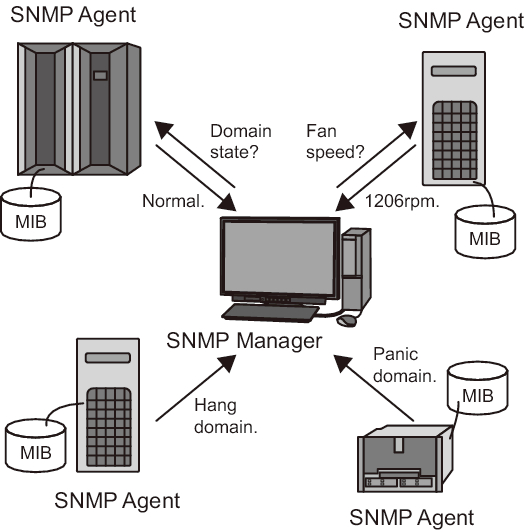10.3.1 Basics of SNMP
10.3.1 Basics of SNMP
The Simple Network Management Protocol (SNMP) is a network management protocol.
SNMP is referred to as a query, command, or response protocol for testing and changing the configuration parameters of a LAN or WAN to which bridges, routers, switches, and other devices are connected.
The following versions are currently offered: SNMPv1, SNMPv2c, and SNMPv3. In contrast to SNMPv1 and SNMPv2c, SNMPv3 has added encryption and authentication functions.
The SNMP manager centrally manages the operation status and problem status of the terminals on a network. The SNMP agent returns management information called Management Information Base (MIB), in response to a manager request. The agent can also asynchronously notify the manager of given information, by using the function called Trap.
SNMP is referred to as a query, command, or response protocol for testing and changing the configuration parameters of a LAN or WAN to which bridges, routers, switches, and other devices are connected.
The following versions are currently offered: SNMPv1, SNMPv2c, and SNMPv3. In contrast to SNMPv1 and SNMPv2c, SNMPv3 has added encryption and authentication functions.
The SNMP manager centrally manages the operation status and problem status of the terminals on a network. The SNMP agent returns management information called Management Information Base (MIB), in response to a manager request. The agent can also asynchronously notify the manager of given information, by using the function called Trap.
Figure 10-3 shows an example of a network management environment using SNMP.
|
Figure 10-3 Example of a Network Management Environment
|

|
Default Port Numbers Used by SNMP
The default port numbers used by SNMP are as follows.
The default port numbers used by SNMP are as follows.
- For the SNMP agent: Port 161
- For trap: Port 162
< Previous Page | Next Page >